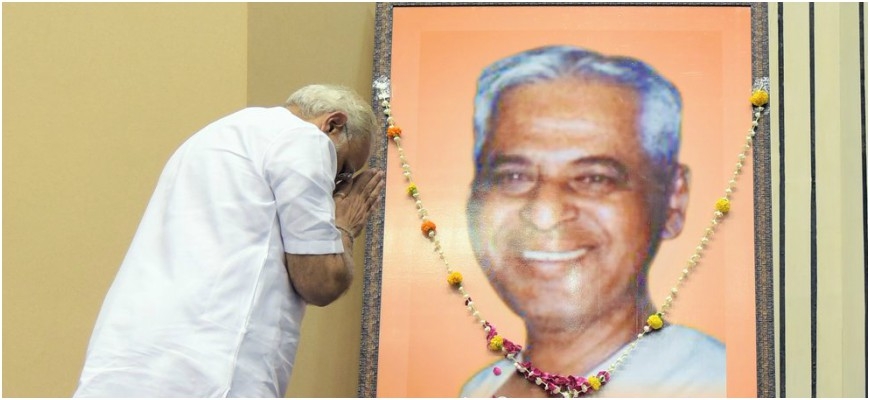Who was Laxmanrao Inamdar?

Rashtriya Swayamsevak Sangh (RSS) is a unique organization that has provided a battery of social and political leaders to the country over last four generations. While some of them have come to limelight, attained glory in India and world over, most of them remain anonymous and faceless.
Late Shri Laxmanrao Inamdar, who was fondly called as “Vakilsaheb”, belongs to second category till yesterday when PM Modiji himself talked very high about him. In last 24 hours, several articles appeared to narrate who Vakilsaheb was and how he shaped life of PM Modiji in his formative years. One such comprehensive article is in India Today. (http://m.indiatoday.in/story/narendra-modi-lakshmanrao-inamdar-rss/1/359926.html)
Vakilsaheb landed in Navsari, Gujarat in 1943 as a pracharak from Maharashtra when he was 25. Before that he actively participated in “Bhagyanagar (Hyderabad) Satyagraha” in 1939. This satyagraha, inspired by Veer Savarkar, was essentially an agitation against atrocities on Hindus by the Nizam of Hyderabad. Inamdar left his LLB education mid-way and joined satyagraha.
Since 1943, he accepted Gujarat as his Karmabhoomi. He quickly learnt Gujarati and started communicating in that tongue. Unless specifically told, no one would even imagine that he had his origins in Maharashtra. Since then over a period of more than three decades, he inspired thousands of swayamsevaks to work for the society and country.
The span of his influence goes over three generations; right from Chimanbhai Shukla, Arvindbhai Maniyar, Vasantrao Gagendragadkar, Keshubhai Patel, PM Modiji… the list is endless. One such example is of Late Shri Anantrao Kale. Original Swayamsevak from Konkan, he came to Kheda district in Gujarat as a construction engineer to build a bridge. Once he met Vakilsaheb who told Anantraoji not to go back but to continue in Gujarat as a pracharak. Anantraoji resigned from job and dedicated his life to the nation as a Sangh Pracharak.
Not only he inspired people to devote life for Sangh but he inspired them to build institutions. His contribution to cooperative sector in Maharashtra and Gujarat will be a subject matter of separate article. When cooperative movement was equated with corruption, nepotism and inefficiency, people inspired by him built exemplary cooperative organizations like Rajkot Sahakari Bank, Janata Sahakari Bank, Pune and many others.
Being in close contacts with families of karyakartas is a hallmark of any Sangh pracharak. Practically every pracharak does it. But, in Sangh history, two pracharak are always quoted as ideal ones in this regard. The first one is Late Dr Abaji Thatte and second is Vakilsaheb.
Thousands of families across Gujarat used to consider Vakilsaheb as a member of their families. But as a true yogi, when he was diagnosed of cancer, he preferred to take treatment in Pune.
When he realized that his end was coming near, he traveled across Gujarat, met swayamsevaks and their families in small and big gatherings, defying his weakness and defying doctor’s advice, even went to houses of many of his close families. In none of his interactions, he talked about his health.
Everyone knew that it would be their last meeting with Vakilsaheb, but his smiling face didn’t allow them to express themselves. He returned to Pune and peacefully took his last breath after few days.